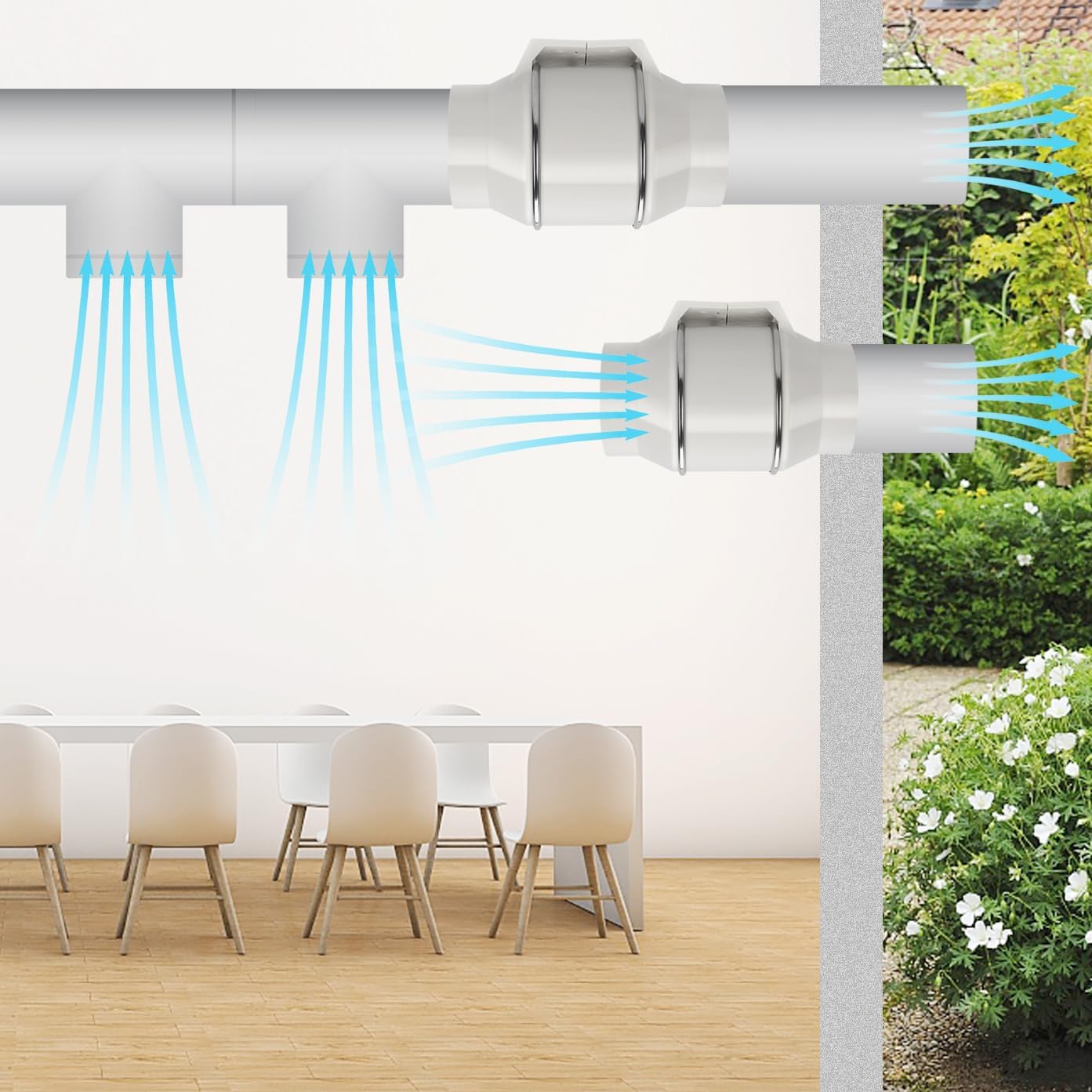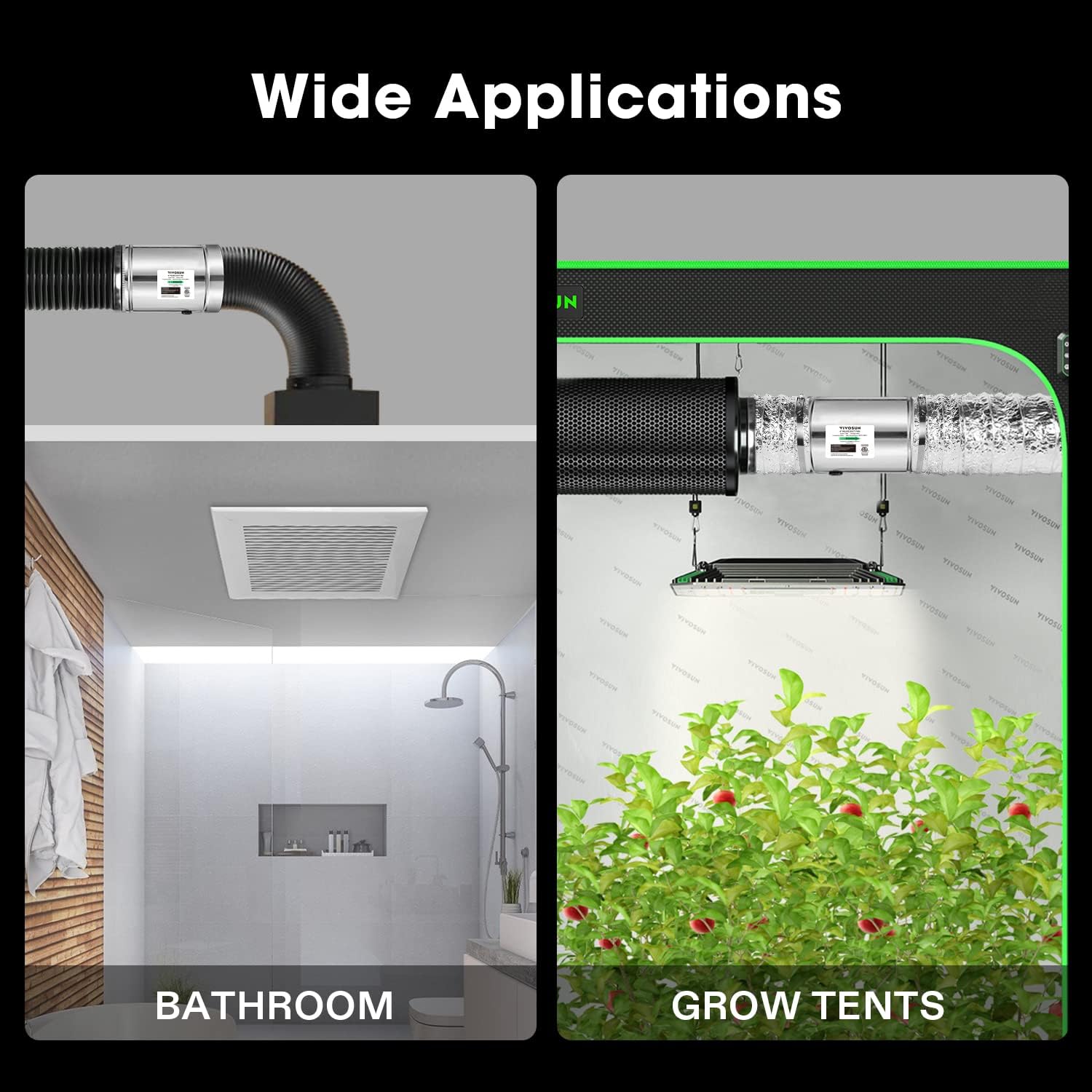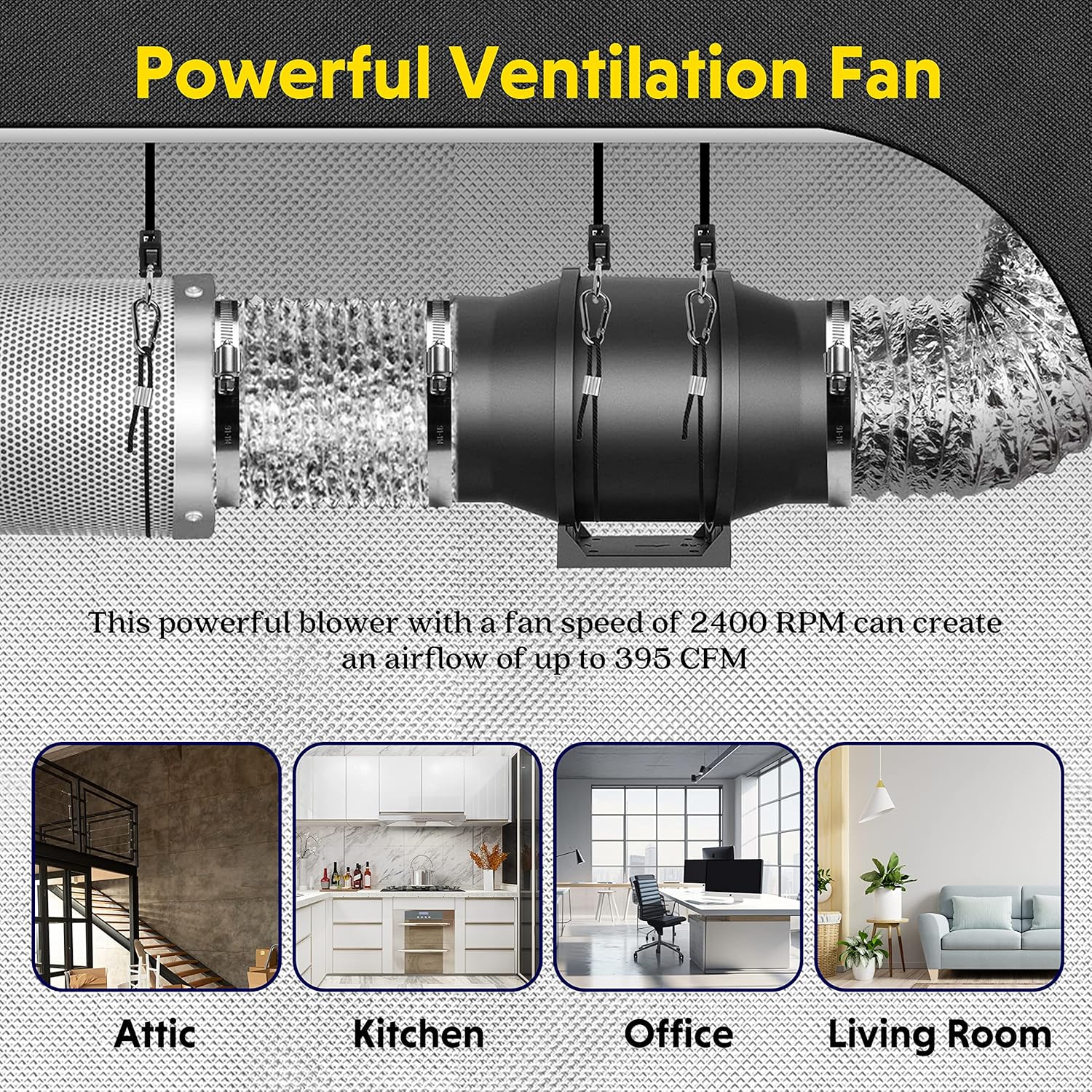Understanding the key points of airflow: What is an inline pipe fan?
Ventilation boosters installed directly in the duct are critical for effective air management systems, which are often integrated into HVAC inline fans to significantly improve airflow. Unlike fans that operate at the beginning or end of a pipe, this particular type of fan is installed directly in the operation of the pipe itself. Its main purpose is to increase the movement of the air, help deliver conditioned air to a specific area, exhaust stale air, or simply enhance overall ventilation in residential, commercial and even industrial environments. This makes it a solution to problems such as poor temperature distribution, inadequate areas such as cooyant rooms or kitchens and bathrooms. By placing it in the middle, the inline fan can overcome the resistance of long or complex ducts, ensuring that the air reaches its intended destination effectively.
Key Benefits of Using Inline Fans

Installing such a ventilation unit offers many advantages to creating a more comfortable and healthier indoor environment. One of the main benefits is that air quality and circulation are greatly improved, ensuring a constant supply of fresh air while eliminating pollutants and pollutants. This directly helps to adjust the temperature throughout the space, eliminating the cold spot or cold spots. For areas prone to moisture or odors (such as bathrooms or kitchens), the inline exhaust fan model can be especially effective in controlling humidity and eliminating unnecessary odors. Furthermore, these fans can increase the overall efficiency of existing HVAC systems by assisting the main blower, potentially reducing energy consumption. Their versatility means they can adapt to a wide range of applications, from enhancing ventilation in the home to meeting the increasing demands of commercial premises.
Choose the perfect inline tube fan for your needs
Choosing the right duct booster is essential for optimal performance and satisfaction. Several factors must be considered. First, the airflow capacity measured in cubic feet per minute (CFM) is crucial. You need to calculate the required CFM based on the room size and the amount of air variation required; for larger areas or specific ventilation tasks, a high CFM inline fan will be required. Second, noise levels are an important consideration, especially for installations in living spaces or offices. Always look for a quiet inline tube fan with a low score (DBA) to ensure unobtrusive operation. Third, make sure the fan is compatible with your existing pipe sizes (e.g. 4 inches, 6 inches, 8 inches in diameter). The type of motor and impeller design also plays a crucial role. For example, centrifugal fans are often favored for their ability to handle higher static pressure and provide consistent airflow. Finally, consider the application: Business applications may require a robust, durable unit such as a commercial inline pipe fan, while industrial inline pipe fans will be used to build for continuous, heavy-duty operations in more extreme environments.
Step-by-step guide to installing ventilation boosters
Although specific installation instructions will vary by manufacturer and model, here are general guidelines for installing new ventilation units. Always determine safety: Turn off the power of the relevant circuit before starting any operation.
1. Collecting tools: Usually a drill bit, screw, wire stripper, tape, fixture, and possibly a saw that cuts the pipe.
2. Select location: Select an accessible section of the pipe that can securely mount the fan and most efficiently. Make sure there are enough straight tubes in front and behind the fan for optimal airflow. Inline tube fans are most effective in smooth transitions.
3. Prepare the pipe: If modified, you may need to cut out a portion of the pipe from the existing pipe to accommodate the ventilation equipment. Measure carefully.
4. Install the fan: Use mounting brackets to secure the fan to the joist or appropriate support structure. Make sure it is correctly directed to the desired direction of airflow, usually indicated by arrows on the fan housing.
5. Connect the pipe: Connect existing or new pipes to both ends of the ventilation booster. Use pipe clamps to ensure connections and apply pipe sealing tape to ensure they are sealed to prevent leakage and loss of efficiency.
6. Wiring: This is a key step. These fans usually come with a junction box or line. Connect the fan to your power supply according to the manufacturer's instructions and local electrical code. If you are uncomfortable with wires, it is highly recommended that you hire a qualified electrician. Look for features such as user-friendly installation brackets and centralized junction boxes that simplify this process.
7. Test system: Once everything is connected and fixed, turn on the power and test the fan. Check for correct operation, airflow, and listen to any abnormal noise or vibration. Make sure to seal all pipe connections.
Maintain your inline fan for optimal performance
To ensure that your new porter operates effectively and lasts for many years, regular maintenance is key. Turn off the power regularly, check and clean the fan blades and housing. Dust and debris can accumulate over time, reducing airflow and potentially causing imbalance or pressure on the motor. Check that all installation hardware and pipe connections are still safe and tighten them if necessary. Listen to any changes in the fan sound during operation; abnormal sounds may indicate problems with the motor bearing or blockage. Make sure that fans that keep inline fans during installation are still accessible to these routine checks and make it easier to do any necessary cleaning or repairs in the future. Regular maintenance not only extends the life of the fan, but also ensures that it continues to contribute effectively to your air quality needs.
Give your space with effective air movement
Selecting and correctly installing the correct inline tube fans can have a significant impact on the comfort, health and efficiency of the indoor environment. Whether you need to lift airflow to a distant room, implement an effective inline exhaust fan solution for problem areas, or ensure optimal execution of your HVAC system, these multifunction units can fit the task. By taking into account CFM, noise levels, and the specific needs of the application (whether residential, commercial or industrial), you can choose a unit that perfectly meets your needs. Then, proper installation and routine maintenance will ensure you enjoy the benefits of improving air circulation and quality over the next few years. Remember that a well-ventilated space created with this device is a happier and healthier space.




